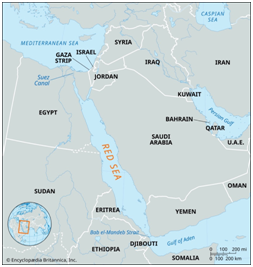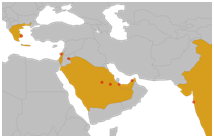Editorials & Articles – 26 Feb 2024
Editorials & Articles – 26 Feb 2024
The Raisina Dialogue lacked diversity in conversations on foreign policy
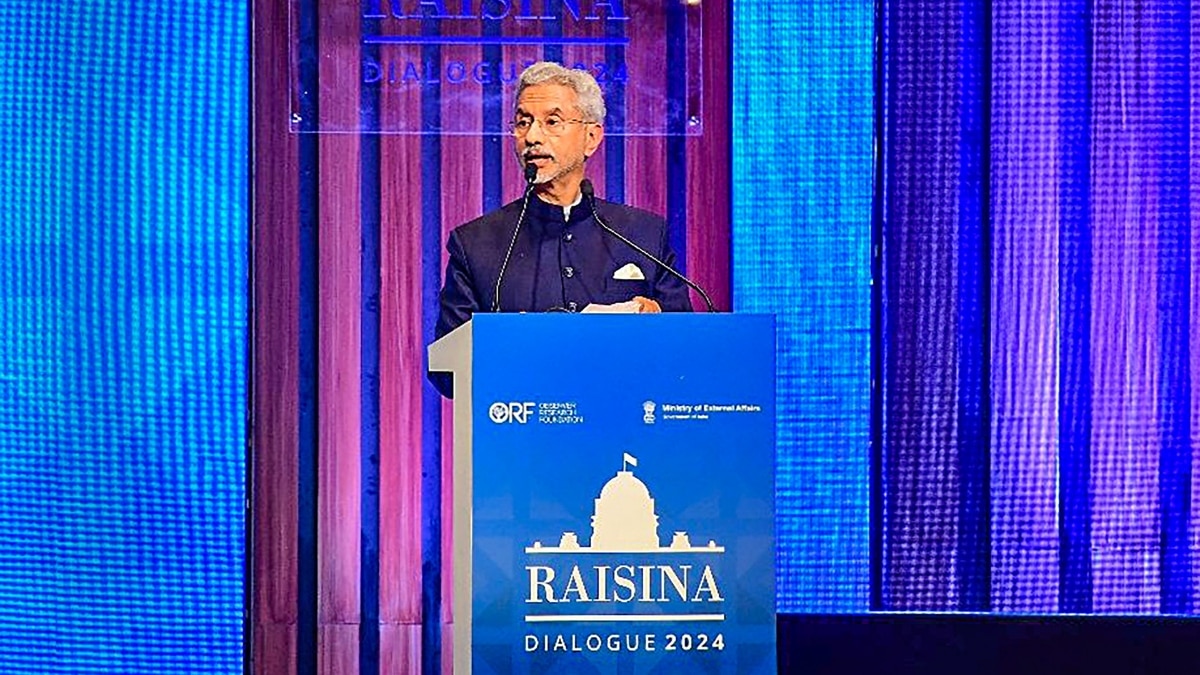
| Context |
| ● The article discusses the highlights of the ninth Raisina Dialogue, emphasizing India’s global role, diplomatic outreach, and focused discussions on conflicts, while noting notable absences and omissions. |
Raisina Dialogue 2024 Highlights: Aims and Ambitions
- The ninth edition of the Raisina Dialogue, an annual event by the Ministry of External Affairs, focused on engaging global leaders in discussions on significant global issues and challenges.
- External Affairs Minister S. Jaishankar emphasized India’s role as a “bridging power” with a “multi-vector” policy, acting as a global friend or “Vishwamitra.”
Global Leadership Perspectives: Connectivity and Governance
- Greek Prime Minister Kyriakos Mitsotakis inaugurated the event, highlighting the importance of connectivity projects like the India-Middle East-Europe Economic Corridor.
- Discussions delved into global governance, addressing issues such as inequality at the UN Security Council and the need for reforms.
- India’s position in global decision-making, expressed as the aspiration “to be a player, rather than a playing field,” was a recurring theme, with reference to its successful hosting of the G-20 in the previous year.
Diplomatic Outreach and Economic Partnerships
- Due to scheduling conflicts, major countries like the P-5, G-7, and BRICS-10 had no senior ministerial representation. However, Central and Eastern European ministers, including those from the Baltic-Nordic forum, offered a new diplomatic outreach for India, exploring trade agreements and investment ties.
Focused Discussions on Global Conflicts: Russian War and China’s Aggression
- The predominant discussions centered on global conflicts, with a spotlight on the Russian war in Ukraine. Panels on military and naval strategy underscored the imperative to address an assertive China.
- However, the absence of invitations to Russia and China resulted in a lack of balance in these conversations.
Notable Absences and Omissions: Lack of Diversity in Conversations
- The event lacked significant representation from South East Asia, Latin America, and South Asia, excluding Nepal and Bhutan.
- Discussions on democracy avoided debates within India, but the absence of non-governmental civil society organizations limited perspectives on global democracy challenges.
- Notably absent were conversations on the Israeli war in Gaza, leading to a lack of diversity in discussions and potentially diminishing the forum’s role as a “Made in India” version of the “Global Public Square,” as observed by Minister Jaishankar.
Conclusion
- In conclusion, the Raisina Dialogue 2024 showcased India’s diplomatic ambitions and global engagements.
- While addressing conflicts and asserting its role, the forum also highlighted the need for diverse perspectives and inclusive discussions on pressing global issues.
| What is Raisina Dialogue? |
|
Space is an area that necessitates expansive collaboration
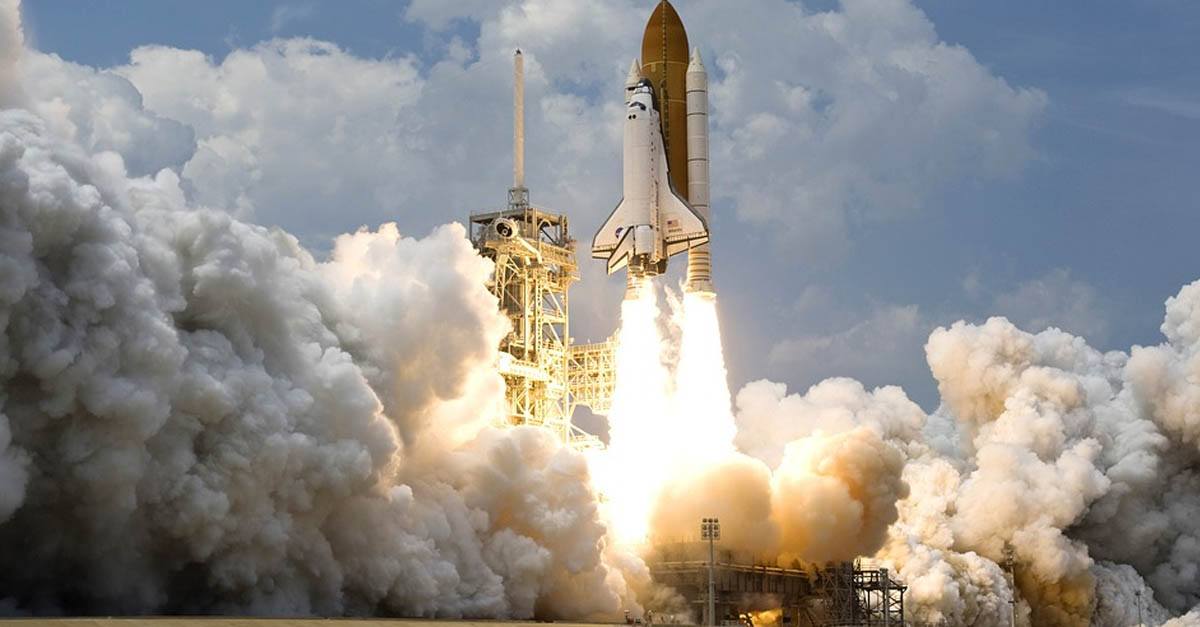
| Context |
|
Introduction and Global Trends in Moon Landings
- Moon landings, a renewed focus globally, witness diverse participation, showcasing technological advancements and different definitions of success.
ISRO’s Success with Chandrayaan-3
- Chandrayaan-3’s successful soft-landing affirms ISRO’s competence, marking India’s emergence as a significant space research and flight provider.
Learning from Luna 25 Mission
- Luna 25’s setback provides valuable lessons for Russia’s Roscosmos, prompting reflections on technological challenges and the agency’s reputation in decline.
Private Sector Breakthrough: Intuitive Machines
- Intuitive Machines (IM) achieves a milestone as the first private company to soft-land a robotic craft on the moon, highlighting the evolving role of the private sector in space exploration.
IM’s Odysseus and NASA’s CLPS Program
- IM’s Odysseus, part of NASA’s Commercial Lunar Payload Services (CLPS) program, faced technical challenges during descent, showcasing the complexities of private involvement in lunar missions.
- The success of CLPS missions, supported by NASA, emphasizes the potential for private companies to contribute significantly to lunar exploration.
Implications for NASA and CLPS Program
- IM’s success underscores the significance of a diversified private space service landscape, crucial for the sustainability and growth of initiatives like the CLPS program.
- NASA’s limited role in CLPS missions, primarily focused on selecting landing sites and providing payloads, showcases the evolving dynamics of collaboration between governmental agencies and private entities.
Global Collaboration and India’s Initiatives
- The global space arena demands extensive collaboration, both internationally and domestically.
- India’s recent approval for up to 100% automatic foreign direct investment in its space program sets the stage for increased competition among Indian startups, potentially alleviating the burden on ISRO in the future.
Conclusion
- In conclusion, the global landscape of moon landings, marked by successes and setbacks, illuminates the evolving dynamics in space exploration, emphasizing the integral roles of private enterprises and international cooperation in shaping the future of lunar missions.
| Government – Private sector Participation in space exploration |
Advantages:
Challenges:
Way Forward:
|
In poll year, a data question
| Context: |
|
Influence of Big Data on Elections Micro-Targeting and Campaign Strategies:
- Big data enables candidates contesting elections to employ micro-targeting strategies, utilizing a plethora of engagement options such as bulk SMS, audio calls, and social media to bolster their campaigns.
- However, voters are often unaware of the extensive databases containing their personal information, and their ability to consent to data collection and usage is severely limited.
Network Effect and Social Media:
- The network effect inherent in social media platforms amplifies the benefits for users as more individuals join, facilitating greater connectivity and access to content.
- Platforms capitalize on enhanced data collection to offer personalized services and targeted advertising, leveraging detailed user profiles for monetization purposes.
Impacts on Privacy Detailed User Profiles
- Platforms amass astonishingly detailed profiles of users, encompassing not only identifiable attributes like age and location but also nuanced preferences and behaviors.
- This extensive data can be monetized through various means, including personalized ads and micro-targeting efforts, as exemplified by the Cambridge Analytica scandal during the 2016 US presidential election.
Political Parties and Data Utilization:
- Political parties leverage digital networks to access detailed information about supporters, enabling tailored content dissemination based on demographic and ideological factors discerned from online activities.
- While these tactics serve both benevolent and manipulative purposes, they raise significant concerns regarding privacy infringement and the opaque use of personal data.
Policy and Regulatory Landscape India’s Data Protection Act:
- The impending implementation of India’s data protection act presents a critical opportunity to mitigate privacy concerns and safeguard individual rights.
- However, existing flaws, such as insufficient limitations on government access to data and inadequate provisions for individual compensation, necessitate urgent amendments to ensure effective privacy protection, particularly amidst electoral preparations.
Challenges in Implementation:
- The gap between passing and enforcing data protection laws has disadvantaged individuals, exacerbating privacy violations and hindering access to information.
- The absence of a data protection board and inadequate redressal mechanisms further underscore the need for comprehensive regulatory frameworks that prioritize the rights and interests of citizens.
Recommendations for Regulatory Framework Inclusive Consultation Process:
- Efforts to enhance data protection must prioritize inclusive consultation processes, incorporating feedback from diverse stakeholders to address existing shortcomings and align with international best practices.
- Sustained engagement opportunities are essential to ensure the effective implementation of regulatory measures.
Empowering Data Protection Board:
- The independence and efficacy of the Data Protection Board are paramount, necessitating strict checks on executive powers and transparent appointment procedures.
- Regulatory rules should mandate adherence to principles such as necessity, proportionality, and data minimization, with heightened security standards for sensitive data categories.
Conclusion:
- The evolving digital landscape poses profound challenges to privacy and democratic integrity, particularly during electoral cycles.
- A people-centric approach to data protection is indispensable in rebalancing power dynamics and upholding fundamental rights in the face of expanding big data economies.
- As countries navigate the complexities of digitization, inclusive and rights-based regulatory frameworks must remain paramount to safeguard individual autonomy and democratic principles.
| What Data Protection Laws are there in Other Nations? |
European Union Model:
US Model:
China Model:
|
North and South, twain must meet
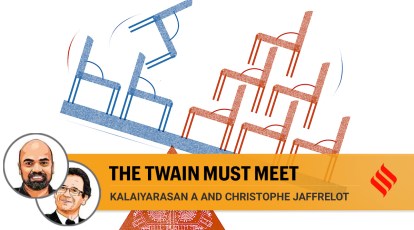
| Context: |
|
Challenges in State Finance Commissions Delayed Reports and Recommendations:
- State FCs often face delays in submitting reports and recommendations, leading to a truncated period of effectiveness for their suggestions.
- This delay undermines the stability of resource transfers to local governments, as identified in studies and corroborated by an RBI report.
Centralizing Impulses and Devolution Constraints:
- Both Union and state governments exhibit tendencies towards centralization, impeding the devolution of resources and functions to the grassroots level.
- Expert’s observation underscores the reluctance of governments to decentralize power beyond their immediate jurisdiction.
Concerns of Southern States Falling Share in Central Taxes:
- Southern states have voiced concerns over the declining share of central taxes, attributing it to a perceived North-South divide.
- However, an analysis reveals that northern states have also witnessed a decline in their share, albeit to a lesser extent.
Dependency on Central Transfers:
- Poorer northern states rely significantly on transfers from the Centre, with a substantial portion of their revenue receipts sourced from central taxes and grants.
- This dependency underscores the crucial role of fiscal transfers in sustaining state finances.
Analysis of Fiscal Transfers Horizontal and Vertical Distribution:
- The issue of fiscal transfers encompasses both horizontal distribution between states and vertical distribution between the Centre and states.
- While the states’ share in the divisible tax pool has increased, the pool itself has shrunk due to the Centre’s reliance on cesses and surcharges, exacerbating fiscal challenges for states.
Impact of Cesses and Surcharges:
- The proliferation of cesses and surcharges has led to a decline in the states’ share of gross tax revenues, complicating the fiscal landscape.
- This trend reflects a shift in the Centre’s spending priorities towards areas under the State and Concurrent lists, further straining state finances.
Policy Recommendations Revisiting Criteria for Horizontal Distribution:
- State FCs should consider revisiting criteria for horizontal distribution of taxes, incorporating parameters such as tax effort, fiscal discipline, and demographic performance.
- A nuanced approach would incentivize states to improve socioeconomic indicators and adopt prudent fiscal policies.
Addressing Political Implications:
- Beyond fiscal considerations, the reluctance to devolve power also stems from political apprehensions, particularly regarding the impending delimitation exercise.
- Addressing these concerns is crucial to fostering a cooperative federal framework and ensuring equitable resource distribution.
Conclusion:
- The challenges faced by State Finance Commissions underscore the complexities inherent in fiscal federalism and resource allocation.
- Addressing delays in FC functioning, revisiting criteria for tax distribution, and mitigating political apprehensions are essential steps towards fostering cooperative federalism and ensuring sustainable fiscal devolution across states.
| State Finance Commissions (SFCs) |
Concerns:
|

Why in the News?
- Houthi (terrorist group) attacks on commercial ships in the Red Sea continue unabated.
- It has once again brought to the fore the vulnerabilities of global supply chains, highlighting the need to revisit alternate routes for global trade.
What’s in Today’s Article?
- About Red Sea (Location, Significance, How the Conflict has Affected India, etc.)
- About IMEC (Purpose, Significance, How It Can be Made Viable, etc.)
About Red Sea:
- The Red Sea is a seawater inlet of the Indian Ocean, lying between Africa and Asia.
- The Red Sea owes its strategic importance for global trade to the Bab el-Mandab Strait which lies between Yemen and Djibouti.
- It is one of the world’s busiest cargo and oil transit points with almost 12% of international merchandise trade passing through it.
- An immediate consequence of the Red Sea conflict has been that major container and oil carriers have been forced to re-route shipments via the Cape of Good Hope.
- The re-routing has led to rising ocean freight, inflated insurance costs, and longer voyage times leading to delays and shortage of products.
- It has also driven up transportation costs. The higher shipping costs will be passed onto consumers in the form of increased commodity prices.
How Has it Affected India?
- India’s trade with European and North African countries flows entirely through the Red Sea route which is almost 24% of its exports and 14% of its imports.
- In the year 2022-23, India’s bilateral trade with Europe and North Africa stood at $189 billion and $15 billion respectively.
- The rising fears among traders have already seen a drop in Indian shipments. As per the Federation of Indian Export Organisations (FIEO), rising threats have prompted Indian exporters to hold back around 25% of their cargo ships transitioning through the Red Sea.
- As global supply chains are battling delayed shipments and rising costs, China is actively projecting China-Europe freight trains, which are part of the Belt and Road Initiative (BRI), as an alternate route.
- The India-Middle East-Europe Economic Corridor (IMEC), which was announced during the G-20 summit in 2023, is another alternative which is not receiving much attention.
About India-Middle East Europe Economic Corridor (IMEC):
- At the sidelines of the G20 Summit held in New Delhi in September 2023, an MoU was signed to develop a rail and shipping corridor connecting India to Europe via the Middle East between India, United States, Saudi Arabia, the United Arab Emirates, France, Germany, Italy, and the European Union.
- The proposed IMEC will involve:
- Rail connectivity,
- Shipping lines,
- High-speed data cables, and
- Energy pipelines.
- These will complement the existing maritime and road networks that will enhance movement of trade and services “to transit to, from, and between India, the UAE, Saudi Arabia, Jordan, Israel, and Europe.”
Significance of IMEC Project:
- IMEC is significant from an infrastructure and connectivity perspective as well as from a geopolitical angle.
- The project involves two separate corridors –
- East Corridor: connects India to the Arabian Gulf, and
- Northern Corridor: connects the Arabian Gulf to Europe.
- According to the MoU, IMEC is “expected to stimulate economic development through enhanced connectivity and economic integration between Asia, the Arabian Gulf, and Europe.”
- The new corridor has other important dimensions, including reliable and secure regional supply chains, better trade accessibility, and trade facilitation.
- In geopolitical terms, IMEC is touted as a counter to China’s Belt & Road Initiative (BRI).
- India, from very early days, had objected to it because the China-Pakistan Economic Corridor, a key component of the BRI, runs through territories claimed by India.
Impact of Israel-Palestine Conflict on IMEC Project:
- With the ongoing Israel-Hamas conflict intensifying, there is a growing realization that the calculations on the kind of diplomatic cooperation that the project of the scale of the IMEC would have warranted as a prerequisite, is far more complicated now.
- The Saudi Arabia – Israel peace deal might not be a possibility in the near future now as mounting anger in the Arab world about the scale of Israel’s offensive in northern Gaza.
- US President Joe Biden’s planned visit in Jordan this week had to be cancelled after an attack on a Gaza hospital.
- A rocket launched near Iraq’s Baghdad International Airport added to a rising number of attacks targeting US forces in the Middle East.
- While the war’s direct impact remains regional, the geopolitical consequences reverberate far beyond, with potential consequences for the proposed IMEC corridor.
How Can the IMEC Project be Made Viable?
- Despite such challenges, the economic logic of the corridor holds, which should encourage stakeholders to keep working towards it.
- First, an empirical study on the economic benefits of the corridor needs to be conducted.
- The corridor is estimated to cut the journey time from India to Europe by 40% and slash transit costs by 30%.
- However, there are speculations that multiple handling of cargo and multi-nation transit would increase carriage and compliance costs.
- Therefore, it is critical to quantify the economic advantages of the corridor to attract more stakeholders.
- Secondly, a robust financial framework needs to be in place.
- Since there are no binding financial commitments on any of the signatories of the corridor, investments will have to be attracted from governments, international organisations, and private sector entities.
- Lastly, a comprehensive multi-nation operational framework is needed.
- As the corridor involves facilitating trade across different legal systems, a multi-national framework is necessary.
- A forum for the corridor needs to be constituted to undertake the aforementioned activities.

Why in news?
- Recently, the Ministry of Power has notified amendments to the Electricity (Rights of Consumers) Rules, 2020.
- In order to accelerate the installation of rooftop solar projects and empower consumers, the amendment contains provisions on connections in residential societies and solving complaints on meter readings.
- The amendments came a week after PM Modi launched PM Surya Ghar: Muft Bijli Yojana earlier this month.
- This scheme will provide households with a subsidy of up to 40% to install rooftop solar panels.
What’s in today’s article?
- Key highlights of the amendment
Key highlights of the amendment
- Installing rooftop solar made easier and faster
- Earlier, DISCOMs were required to conduct a feasibility study for rooftop solar projects within 20 days of an application being filed, and then intimate the outcome to the applicant.
- A technical feasibility study determines whether a property is physically and financially suitable for the installation of solar panels.
- The latest amendments have reduced that period to 15 days. Moreover, if the study is not completed by then, it shall be presumed that the proposal is technically feasible.
- In other words, DISCOMs are no longer required to complete a technical feasibility study before accepting an application to begin the installation of solar panels.
- The rules also note that solar PV systems up to a capacity of 10 kilowatts shall be deemed accepted without requiring a study.
- DISCOMs can also include expenditure on strengthening distribution infrastructure for rooftop solar projects (with a capacity of up to 5 kilowatts or higher) in its revenue requirement.
- The exact maximum capacity shall be prescribed by each state electricity regulatory commission.
- In other words, the costs of strengthening distribution infrastructure for rooftop solar projects with a capacity of up to 5 kilowatts will be borne by DISCOMs, and this can be covered through its operations.
- Empowering consumers in residential societies
- The new rules that allow people living in residential societies to choose between having separate connections for each household or having one connection for the entire society.
- This choice will be made through a fair voting process organized by the distribution company.
- If the owners opt for a single-point connection for the whole premises, then the association overseeing a residential society will be responsible for metering, billing, and collection of the amount due on a no-profit-no-loss basis.
- In the case of individual connections, the DISCOM will be responsible for those tasks.
- The amendments also require DISCOMs to install an additional meter in case a consumer complains of meter readings not reflecting actual consumption.
- If the meter is found to be inaccurate, the excess or deficit charges shall be adjusted in the subsequent bills, as per existing rules.
- The new rules that allow people living in residential societies to choose between having separate connections for each household or having one connection for the entire society.
- New electricity connections to be provided more quickly
- The amended rules have reduced the period for obtaining a new electricity connection or modifying an existing one in metropolitan areas from seven to three days.
- In other municipal areas, this has reduced from 15 to seven days, and in rural areas from 30 to 15 days.
- In rural areas with hilly terrain, however, the period will continue to remain 30 days.
- Electric Vehicles mentioned for the first time in the rules
- DISCOMs are required to provide a separate connection for the supply of electricity to an EV charging point if requested by a consumer and within the revised period as mentioned above.
- In other words, EV owners in New Delhi, Bangalore, or other metropolitan cities can now get a new electricity connection to charge their cars in three days.

Why in news?
- Recently, the Ministry of Statistics and Programme Implementation, released data on household consumption expenditure for the year 2022-23.
- The data shows per capita monthly household expenditure more than doubled in 2022-23 as compared to 2011-12.
What’s in today’s article?
- Key takeaways from the 2022-23 survey
Key takeaways from the 2022-23 survey
- Share of spending on food in India changed over the last 20-odd years
- Between 1999-2000 and 2022-23, the share of expenditure on food has gradually declined for both urban and rural households.
- However, it is for the first time that expenditure on food has fallen to less than 50 per cent of the total consumption expenditure in rural India, and to less than 40 per cent in urban India.
- Within foods, what are we eating?
- The share of cereals and pulses within overall food consumption expenditure has reduced, both in rural and urban areas.
- The share of spending on milk has increased, so much so as to overtake that on cereals and pulses combined — i.e. foodgrains — in 2022-23.
- The average rural as well as urban Indian has, for the first time in 2022-23, spent more on fruits and vegetables than on foodgrains.
- The spending on vegetables alone exceeded that on cereals, and likewise for fruits vis-a-vis pulses.
- A growing share of the consumer rupee is also going to eggs, fish and meat.
- When combined with the rising and falling shares of milk and pulses respectively, it suggests a clear preference among Indian consumers for animal proteins over plant proteins.
- Indians are spending more, as a percentage of their total expenditure, on processed foods, beverages and purchased cooked meals.
- Spending on food and the items consumed supports Engel Curve hypothesis
- Named after the 19th century German statistician Ernst Engel, it broadly states that as incomes grow, households spend a smaller proportion of that on food.
- Even within food, they would buy more of “superior” and less of “inferior” items.
- In the present case, cereals, sugar and pulses are inferior, while milk, egg, fish, meat, fruits and vegetables, beverages and processed foods are superior.
- Narrowing rural-urban gap
- The data shows consumption in rural areas is growing faster than in urban areas, thereby narrowing the gap.
- If the trend continues, it is possible that urban and rural incomes and consumption will be the same in the coming years.
- The average monthly per capita consumption expenditure (MPCE) of agricultural households
- For the first time, MPCE of agricultural households has fallen below the overall average of rural households.
- The average MPCE of families self-employed in agriculture was Rs 3,702 in 2022-23, while the overall average of rural households was Rs 3,773.
- The gap between the MPCE of agricultural families and the overall average of rural households has been narrowing over the years.
- The MPCE of casual labourers and regular wage earners engaged in agriculture was also lower than the rural average
- Need to review the inflation basket
- Inflation is calculated based on the changes in the price levels of items in a large basket. These items must ideally reflect what Indians are consuming.
- The Consumer Price Index (CPI)-based inflation, also called retail inflation, is currently based on a basket that was decided in 2012.
- However, over the last 11 years, as the latest Household Consumption Expenditure (HCE) Survey 2022-23 shows, a lot has changed.
- For example, the CPI (Rural) basket assigns a weightage of 12.35 per cent to ‘cereals and products’.
- But as discussed above, the latest HCE Survey shows rural households spend just 4.91 per cent on cereals (and cereal substitutes).
- On poverty
- As per NITI Aayog CEO B V R Subrahmanyam, the latest consumer expenditure survey indicates that poverty has come down to five per cent in the country.
- People are becoming prosperous both in rural and urban areas.
- The data showed that the average per capita monthly expenditure for all categories stood at Rs 3,773 in rural areas and Rs 6,459 in urban areas.
- The average per capita monthly expenditure of 0-5% fractile (bottom 5%) class is pegged at Rs 1,373 in rural areas and Rs 2,001 in urban areas.
- As per NITI Aayog CEO B V R Subrahmanyam, the latest consumer expenditure survey indicates that poverty has come down to five per cent in the country.
- Demand for a legal guarantee to MSP and the survey data
- The demand for a legal guarantee to MSP is mainly from farmers of 23 crops, including foodgrains and sugarcane.
- But farm sector’s growth is being led by livestock, fisheries and horticulture crops outside MSP purview.
- However, the survey data shows that their growth is largely market demand-driven.
- Hence, it raises an important question:
- if consumption of milk, fish, poultry products, and fruits and vegetables is rising much more than cereals and sugar, shouldn’t the focus be on promoting production of the former as opposed to the latter?
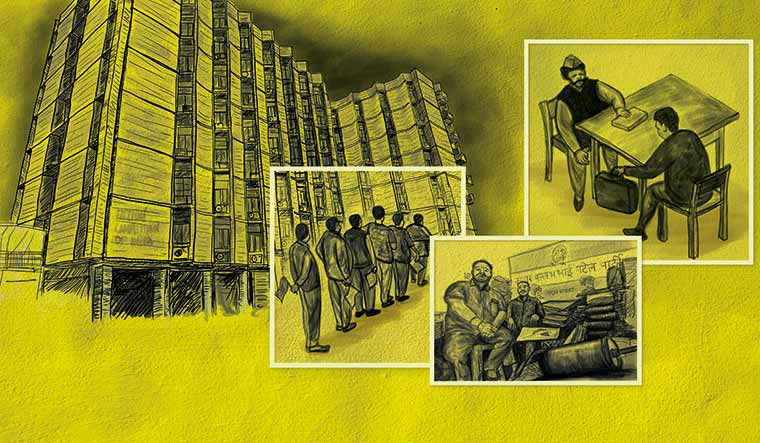
Why in News?
- Recently, the Congress party alleged that the Income Tax (IT) Department instructed banks to transfer over Rs. 65 crores from the accounts of the Congress, the Youth Congress (IYC) and the NSUI.
- Terming it “economic terrorism”, Congress treasurer (Ajay Maken) said the move came even as the party has its challenge of a Rs. 210 crore tax demand pending before the IT Appellate Tribunal (ITAT).
What’s in Today’s Article?
- Are Political Parties Required to Pay Income Tax?
- Are Political Parties Required to File IT Returns?
- What is the Present Case of the Congress?
Are Political Parties Required to Pay Income Tax?
- The Income Tax Act 1961 exempts political parties registered by the Election Commission (EC) under the Representation of the People Act 1951 from paying income tax, with some conditions.
- Section 13-A of the Act (special provision relating to incomes of political parties): It says that any income under the heads of
- Income from house property,
- Income from other sources,
- Capital gains and
- Income from voluntary contributions shall not be included in the total income of the previous year of the party.
- The above exemption is valid as long as –
- The political party maintains books of account that would enable the Assessing Officer to “properly deduce its income”;
- Maintains a record of all contributions above 20,000 each;
- Has its accounts audited by an accountant and does not accept any donation above 2,000 each in cash; and
- The treasurer of the party or any other person authorised by the party submits a declaration of its donations to the EC before the due date of filing IT returns.
Are Political Parties Required to File IT Returns?
- Parties are required to file their returns if their total income, before taking into account the exemptions under Section 13A, is higher than the IT exemption limit.
- Section 139 (4B) says that the chief executive officer of every political party furnishes a return of such income of the previous year in the prescribed form, if,
- The total income exceeds the maximum amount which is not chargeable to IT.
What is the Present Case of the Congress?
- The Congress’ treasurer said that the IT Department had told the banks where the Congress, IYC and NSUI had their accounts to transfer Rs 65 crore.
- This was even as the ITAT was hearing the Congress’ challenge against a Rs 210 crore tax demand.
- The IT demand pertains to the financial year 2018-2019.
- The party had received Rs. 142.83 crore in donations that year and of this amount, Rs. 14.49 lakh was received in cash.
- This was collected from Congress MLAs and MPs, who contributed one month’s salary each.
- According to the Congress’ treasurer,
- The party submitted its account details later on February 2, 2019, instead of the deadline of December 31, 2018.
- The IT Department had raised a demand of Rs.210 crore over just Rs. 14 lakhs in cash donations, just before the 2024 Lok Sabha elections.
- The matter now rests with the ITAT, which completed its hearing and reserved its order.
